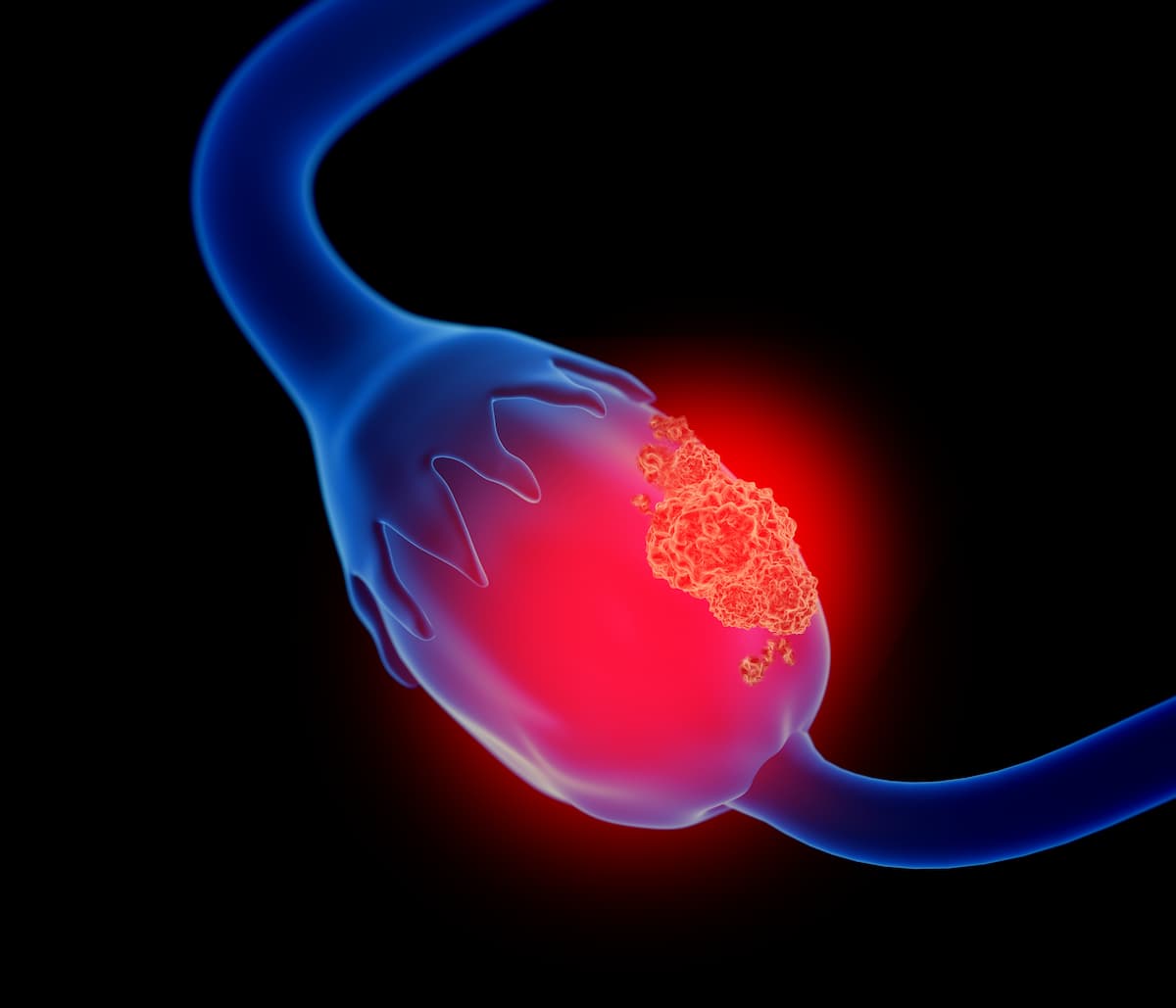Priming strategies with olaparib (Lynparza), including the addition of durvalumab (Imfinzi) with or without low-dose cyclophosphamide (LDCy), did not definitively improve efficacy outcomes vs olaparib monotherapy among patients with platinum-sensitive recurrent ovarian cancer (PSROC), according to findings from the non-comparative phase 2 SOLACE2 trial (ACTRN12618000686202) published in Nature Communications.
After a median follow-up of 44.7 months (range, 1-47), the 36-week progression-free survival (PFS) rates among patients treated with olaparib/durvalumab in arm A (n = 38), olaparib/durvalumab/LDCy in arm B (n = 39), and olaparib alone in arm C (n = 37), were 47.4% (95% CI, 31.0%-62.1%), 48.7% (95% CI, 32.5%-63.2%), and 35.1% (95% CI, 20.4%-50.3%), respectively. Additionally, the median PFS among the respective arms was 35.6 weeks (95% CI, 23.6-40.4), 35.9 weeks (95% CI, 23.7-48.1), and 24.4 weeks (95%, CI 22.1-36.1)
Regarding responses, the confirmed objective response rate (ORR) per RECIST v1.1 criteria and the Gynecologic Cancer Intergroup (GCIG) in arms A, B, and C was 42.1% (95% CI, 26.3%-59.2%), 53.8% (95% CI, 37.2%-69.9%), and 35.1% (95% CI, 20.2%-52.5%).
“[O]laparib/durvalumab and olaparib/LDCy/durvalumab were associated with numerically greater ORR and longer PFS as compared with olaparib monotherapy but this study was not powered for relative comparison between treatment arms. Most importantly, we characterized concise immunological features of study [patients] who benefitted the most from these olaparib-based therapies, including in the homologous recombination proficient [HRP] and BRCA wild-type subgroups,” lead study author Chee Khoon Lee, from the NHMRC Clinical Trials Centre of The University of Sydney and the Department of Medical Oncology at St George Hospital in Kogarah, New South Wales, Australia, wrote with coauthors. “Ongoing work will continue to better identify patients and treatment strategies to optimally incorporate PARP [inhibitors] and [immune checkpoint inhibitors] into the treatment paradigm for PSROC.”
Among patients with confirmed human recombinant deficient (HRD) disease (n = 71), the 36-week PFS rates in arms A, B, and C were 59.1% (95% CI, 36.1%-76.2%), 56.0% (95% CI, 34.8%-72.3%), and 37.5% (95% CI, 19.0%-56.0%); for patients with HRP disease (n = 29), the rates were 40.0% (95% CI, 12.3%-67.0%), 40.0% (95% CI, 12.3%-67.0%), and 22.2% (95% CI, 3.4%-51.3%) in the respective arms. Additionally, a significant difference in PFS was observed between the HRD and HRP subgroups across all treatment arms (HR, 0.55; 95% CI, 0.35-0.87; P = .01).
Moreover, the confirmed ORR in arms A, B, and C, respectively, in the HRD population was 57.9% (95% CI, 33.5%-79.7%), 63.6% (95% CI, 40.7%-82.8%), and 36.4% (95% CI, 17.2%-59.3%); for the HRP population, the respective rates were 22.2% (95% CI, 2.8%-60.0%), 40.0% (95% CI, 12.2%-73.8%), and 14.3% (95% CI, 0.4%-57.9%).
The multicenter phase 2 study was conducted across 15 hospitals in Australia. Those with histologically confirmed high-grade serous ovarian cancer who underwent prior surgery and received at least 1 line of platinum-based chemotherapy were eligible for enrollment. Patients must also have had PRSOC, asymptomatic or minimally symptomatic disease, raised CA-125 levels, and/or measurable disease.
Patients enrolled were randomly assigned 1:1:1 to receive olaparib/durvalumab, olaparib/durvalumab/LDCy, and olaparib alone. All patients across arms received 300 mg of olaparib twice daily continuously. In the priming phase, arm B received oral LDCy at 50 mg on days 1 to 5 every week. In the consolidation phase, the same regimen of olaparib was maintained, but those in arms A and B of treatment received a fixed dose of durvalumab at 1500 mg once every 28 days for a maximum of 3 years.
Treatment in all arms continued in the absence of disease progression, unacceptable toxicity, or withdrawal from study. Additionally, olaparib or durvalumab treatment could be continued beyond radiological progression.
In arm A, B, and C, the median age was 65 years (range, 42-83), 63 years (range, 44-81), and 72 years (range, 46-87), respectively. A total of 81.6%, 82.1%, and 73.0% had an ECOG performance status of 0; 84.2%, 79.5%, and 59.5% had primary ovarian cancer; and 57.9%, 64.1%, and 73.0% had FIGO stage III disease at diagnosis. Most patients in each arm had measurable disease (71.1%, 71.8%, and 70.3%), HRD BRCA wild-type disease (50.0%, 51.3%, 51.4%), and a platinum-free interval of more than 12 months (65.8%, 61.5%, 64.9%).
The primary end point of the study was the 36-week PFS rate. Key secondary end points included ORR per RECIST v1.1 criteria and GCIG CA-125, patient-reported outcomes, time to next therapy, and safety.
In the priming phase of the study, grade 3 or higher adverse effects (AEs) were observed in 15.8% of arm A, 43.6% of arm B, and 21.6% of arm C. In the consolidation phase, the respective grade 3 rates were 37.8%, 48.6%, and 40.0%. The most commonly reported AEs included nausea, fatigue, and anemia.
One grade 3 or higher immune-related AE was observed in a single patient in arm B. In the priming phase, 5.3%, 12.8%, and 5.4% of the respective arms experienced AEs leading to dose interruption in addition to 5.4%, 8.6%, and 13.3% who experienced AE-related interruptions in the consolidation phase.
Reference
Lee CK, Kartikasari AE, Bound NT, et al. Olaparib, durvalumab, and cyclophosphamide, and a prognostic blood signature in platinum-sensitive ovarian cancer: the randomized phase 2 SOLACE2 trial. Nat Commun. 2025;16(9756). doi:10.1038/s41467-025-64130-6
